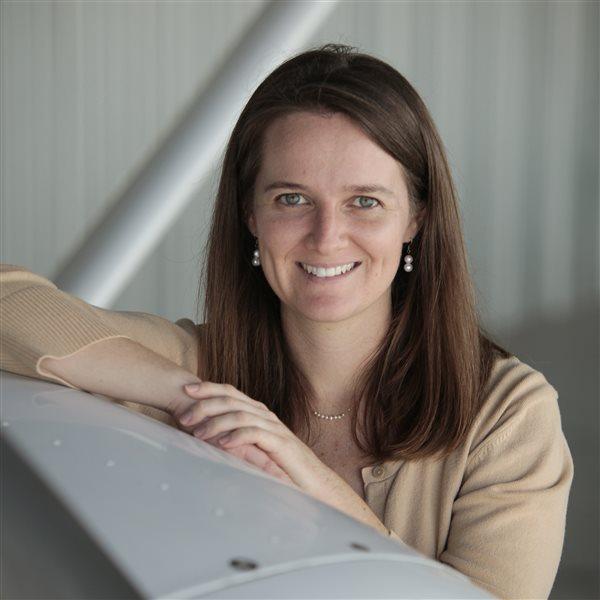Perseverance pays off
For nearly two decades, Greenhalgh repeatedly faced hurdles on her quest to learn to fly. Now, thanks to a scholarship that she received this spring, she's on her way to combining her passion for aviation with her training in biology.
Greenhalgh, of Westerly, Rhode Island, is a volunteer coordinator for the state's National Wildlife Refuge Complex of the U.S. Fish and Wildlife Service. She earned her private pilot certificate almost two years ago and plans to use the Ride the Sun scholarship, which provides specialized training to advance one's experience in a career, to become a biologist pilot. Ride the Sun is sponsored by pilots Ruth Maestre and Denise Waters, and is one of many opportunities offered yearly to members of Women in Aviation International.
Name: Janna Greenhalgh |
"If you've got the drive, there's a way," Greenhalgh says.
Greenhalgh's first flight in the back seat of a Cessna 172 (she bought a $15 ticket from a call-in radio show) motivated her to look into flight training as a sophomore in high school in 1985. It was too expensive. She inquired about getting a job at the airport. That didn't pan out either. She joined the Civil Air Patrol hoping to get some time in the air but didn't even get to sit in an aircraft.
Greenhalgh entered the U.S. Coast Guard after high school, planning to become a pilot through the military, but her vision was right at the cut-off limit.
However, it was during her stint in the Coast Guard that her desire to become a pilot was fanned. That was when she took the controls of an aircraft for the first time--during a training mission in a Coast Guard HH-65 Dolphin helicopter. "[It was the pilot's] ability to be an ambassador [for aviation] and engage me even though I was sitting there like a lump," Greenhalgh says. "He lit the fire."
When she left the Coast Guard in 1994, she planned to use the Montgomery GI Bill to earn her wings. That didn't work either--it didn't apply to primary flight training, only to advanced certificates or ratings. So, she used the program to earn a bachelor's degree in biological sciences from the University of Connecticut. Meanwhile, she began saving money, and once she had put aside almost enough to earn a private pilot certificate, she once again took steps to start training.
Then she lost her job and had to decide whether to use that nest egg for living expenses or flying lessons.
"I went to Coastal Air [in Groton, Connecticut] and said, 'Sign me up before I spend my money,'" Greenhalgh recalls. "That was a tough decision. I said, 'Enough's enough; I've gotta do this.'" (She found a part-time job.)
Since earning the private certificate in 2004, everything seems to have fallen into place. Greenhalgh plans to complete an instrument rating this summer. She is using the Ride the Sun scholarship to take upset and spin recognition and recovery training.
"This scholarship is really exciting," Greenhalgh says. "It's going to be the first step in a long string of training and experience to make me a biologist pilot."
She has mapped out plans to achieve her goal. Within the next two years, she expects to build time, earn the commercial certificate, and then apply for a two- to three-year U.S. Fish and Wildlife Services biologist pilot apprenticeship. She's already had a sneak peek at what the job will entail. Last winter Greenhalgh rode along on a survey flight. They spent most of the time flying a twin-engine aircraft at 200 feet agl in 30- to 45-degree bank turns, counting birds, talking to air traffic control, watching for traffic--and, of course, flying the airplane.
It's been a long time coming for Greenhalgh, and the 19 years she persevered through disappointment after disappointment might make these next few years seem like a drop in the bucket. "It was all just leading me to here and now," she says, full of excitement for the opportunities that lie ahead, "and that's OK."
Alyssa J. Miller is an assistant editor for AOPA's electronic publications. A private pilot, she is training for her instrument rating.



